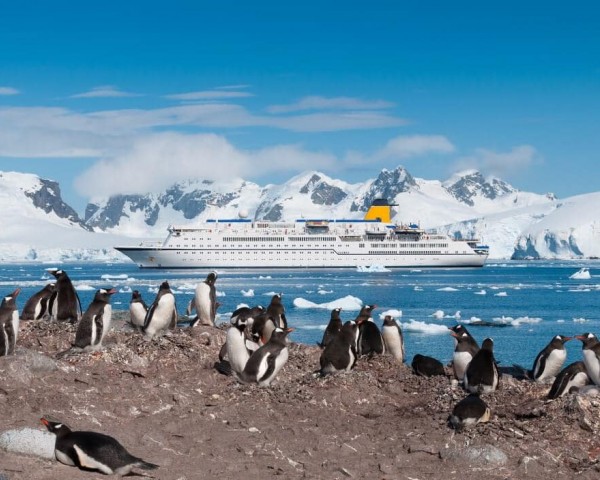Tourism in Antarctica has surged dramatically in recent years. Many cruise lines now offer luxury trips, making these excursions more appealing to travelers. However, experts are concerned that this increase in tourism poses a significant threat to the region’s pristine environment.
In 2017, just under 44,000 tourists visited Antarctica; this year, that number has already exceeded 122,000.
Antarctica Is a Popular Attraction
Antarctica is at the top of many people’s travel wish lists, and expanding luxury travel options is fueling the interest.
In the past, reaching Antarctica was possible only through small “ice cutters,” which were far from luxurious; in fact, many lacked windows, and passengers typically slept on bunk beds. According to Colleen McDaniel of Cruise Critic, today’s travel options to Antarctica are vastly different: “Cruise lines such as Ponant, Silversea, Seabourn, and Scenic have made significant advancements in luxury travel, offering incredible suites, excellent restaurants, and even onboard spas.”
Experts See Great Danger from Cruises to Antarctica
Experts consider these developments a threat to the environment. A study published in the journal *Nature* indicates that tourism in Antarctica has harmful environmental effects.
For instance, black soot from chimneys contributes to accelerated snowmelt. Additionally, ecologists warn that the increasing human presence in Antarctica is raising carbon dioxide levels in an area typically unaffected by such changes.
Cruise lines claim they will provide passengers with detailed information on how to behave in Antarctica to avoid harming nature. For example, passengers are advised not to bring food and to maintain a safe distance from the wildlife. The Antarctic Treaty also prohibits constructing permanent tourist facilities, such as hotels.
Unusual Heat Wave in Antarctica Worries Researchers
Antarctica has already experienced an unusual heat wave this year, with temperatures reaching up to ten degrees Celsius above average. Meteorologist Thomas Bracegirdle from the British Antarctic Survey described this event as “record-breaking” and emphasized its significance as an essential signal for future developments.
The region previously faced an extreme heat wave in March 2022. The current collapse of the southern polar vortex, which is responsible for the unusually high temperatures, occurs on average only once every two decades. This indicates that rapid changes are becoming increasingly possible in Antarctica.












